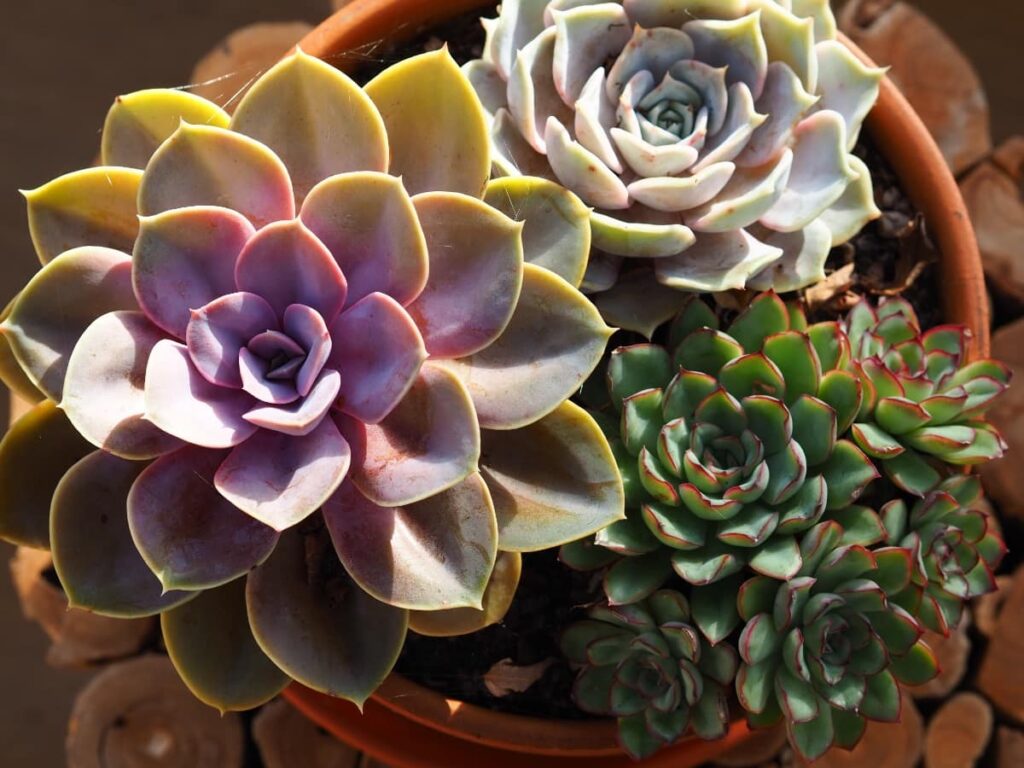The new trend of succulent garden containers has been on the rise in recent years, and it’s not hard to see why. These plants are not only aesthetically pleasing and distinctive, but they are also incredibly low-maintenance, making them ideal for those who lack a green thumb or reside in areas with limited rainfall. Succulents are renowned for their ability to store water in their leaves, stems, and roots, which is why they are so adaptable to various environments.
Succulent gardens can be fashioned in a multitude of ways, ranging from small potted arrangements to sprawling outdoor landscapes. With a vast array of colors, shapes, and sizes to choose from, it’s easy to create a garden that is both visually striking and easy to maintain.
Whether you’re a seasoned gardener or a novice, succulent gardening is an excellent way to add some greenery to your home or outdoor space. In this article, we’ll provide you with all the information you need to start your own succulent garden, including tips on selecting the right plants, soil, and containers, as well as how to care for your succulents to ensure they flourish.
Choosing the Right Succulents for Your Garden
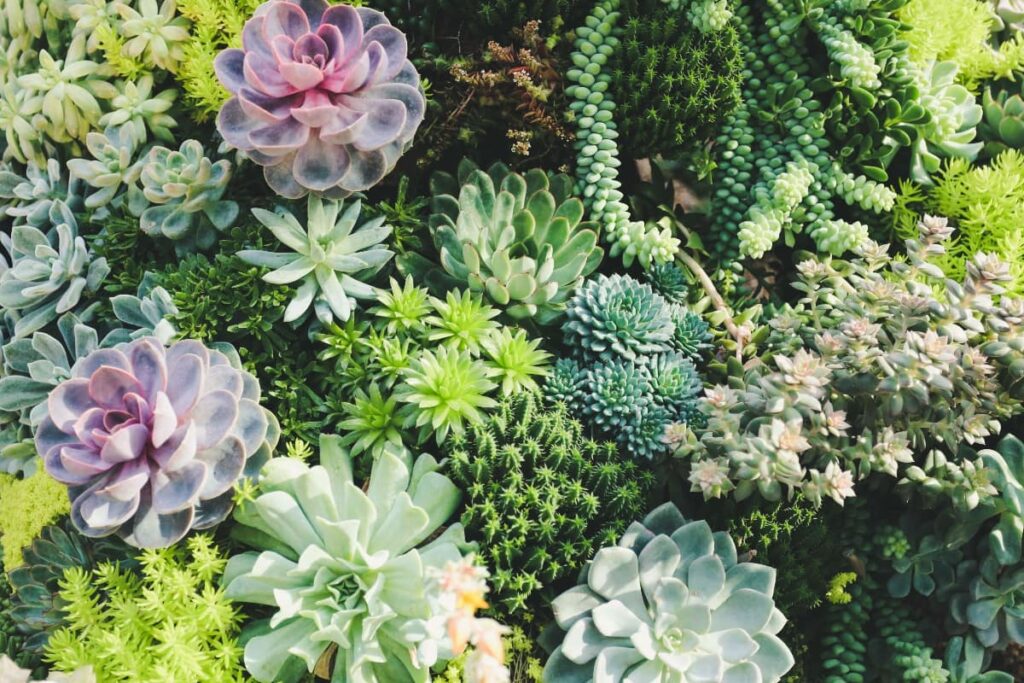
When it comes to the creation of a succulent garden, the selection of the right plants is key. Succulents come in so many different shapes, sizes, and colors, making it fun to choose plants that will complement each other and flourish in your specific climate.
To start, consider the amount of sunlight your garden receives. Some succulents, such as Echeveria and Sedum, prefer full sun, while others, like Zebra Haworthia and Gasteria, do better in partial shade. Most succulents will do well somewhere in this range, making succulents a perfect pick for outdoor gardens.
Next, the size and shape of your succulents should be taken into account. Taller plants like Agave and Aloe can add height and drama to your garden, while smaller plants like Crassula and Graptopetalum can be used to fill in gaps and create a lush, textured look. The variation in size and shape of your succulents will add an element of interest to your garden.
Finally, the color palette of your garden should be considered. Succulents come in a range of hues, from bright greens and blues to deep purples and reds. It is essential to think about the overall look you want to achieve and choose plants that will complement each other and create a cohesive design. The color variation in your succulents will add a pop of vibrancy to your garden.
Some popular succulents for gardeners include Echeveria, Sedum, Crassula, Agave, and Aloe. Echeveria, with their rosette-shaped succulents, come in a variety of colors and are perfect for adding texture and interest to your garden. Sedum, on the other hand, are low-growing succulents that are great for ground cover and come in a range of colors and textures. Crassula, with their small, compact succulents, are perfect for filling in gaps and creating a lush, full look. Agave, with their dramatic succulents, come in a range of sizes and shapes and can add height and structure to your garden. Aloe, with their spiky succulents, are great for adding texture and interest to your garden, and many varieties also have medicinal properties.
By selecting the right succulents for your garden, you can create a beautiful and low-maintenance landscape that will thrive for years to come. The variation in size, shape, and color of your succulents will add an element of interest and vibrancy to your garden, making it a sight to behold.
Preparing the Soil for Succulent Gardening
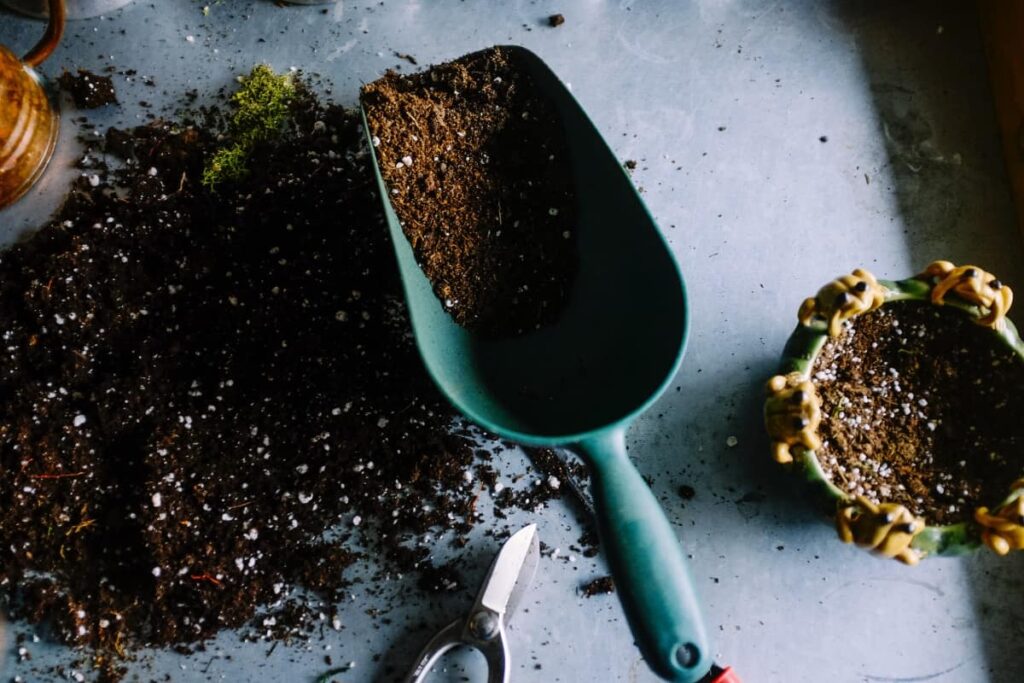
When it comes to growing a successful succulent garden, one of the most crucial aspects is preparing the soil. But how do you ensure that your soil is up to par? Well, it all starts with choosing the right soil. Succulents prefer soil that is sandy and gritty, with good drainage. You can either purchase a pre-made succulent soil mix or make your own by mixing equal parts of sand, perlite, and potting soil. To do this, dig a hole about 6 inches deep and fill it with water. If the water drains away within an hour, the soil is suitable for succulents. If the water takes longer to drain, you may need to add more sand or perlite to the soil.
But what if your soil is too heavy or has poor drainage? You can fix extra-moist soil by adding sand, perlite, or pumice. Mix in these materials until the soil is light and airy. And while succulents don’t require a lot of nutrients, they do need some to thrive. You can add a slow-release fertilizer to the soil before planting or use a liquid fertilizer once a month during the growing season.
Dig a hole that is slightly larger than the root ball of your succulent. And voila! By following these steps, you can prepare the perfect soil for your succulent garden. Remember, succulents thrive in well-draining soil that is not too rich in nutrients, so be sure to choose the right soil and amend it as needed. With the right soil, your succulent garden will flourish and thrive for years to come.
Planting Your Succulent Garden
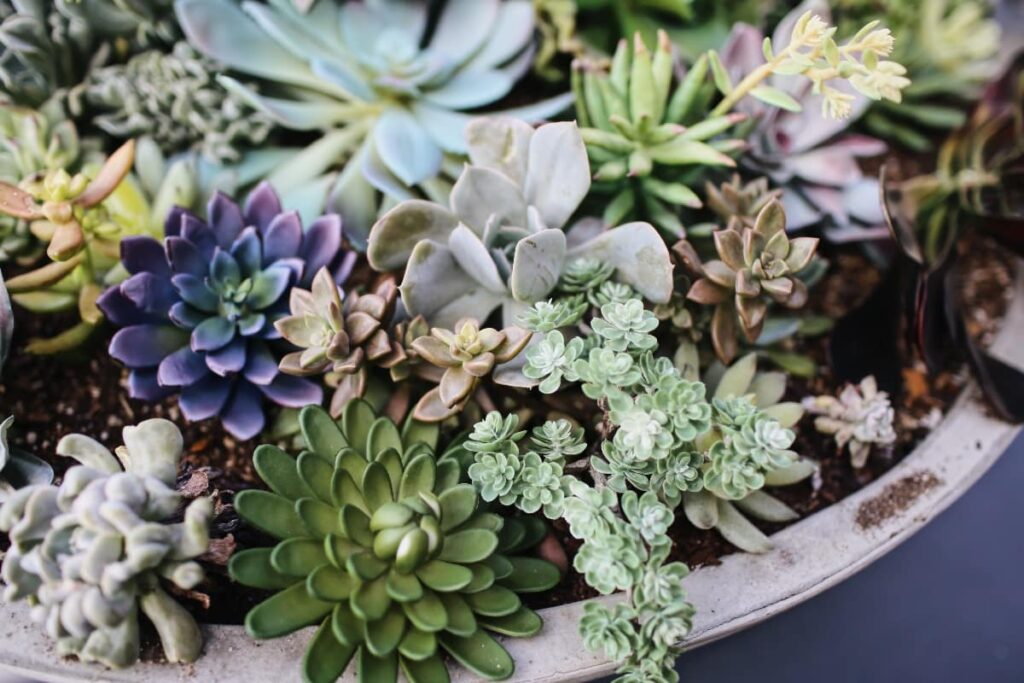
As you embark on the journey of planting your succulent garden, there are a few key steps to keep in mind. First and foremost, you must choose the perfect succulents that will thrive in your specific climate and soil type. This can be a daunting task, as there are so many different colors, shapes, and sizes to choose from. However, with a little research and some careful consideration, you can create a visually stunning garden that will be the envy of all your neighbors.
Once you have selected your succulents, it’s time to plan the layout of your garden. You can create a focal point by placing a larger succulent in the center of the garden, or you can mix and match different varieties to create a more eclectic look.
Next, it’s time to dig holes for each succulent. This may seem like a simple task, but it’s important to make sure the holes are deep enough to accommodate the roots of the plant. Once the holes are dug, you can add a layer of soil to the bottom of each one to help the succulent establish its roots and grow strong. Make sure the top of the soil in the container is level with the soil in the garden, and fill in the gaps around the succulent with soil. Press the soil down gently to ensure the succulent is secure.
After planting, it’s important to water the garden thoroughly. This will help the succulents establish their roots and begin to grow. Finally, you can add decorative elements such as rocks, pebbles, or driftwood to enhance the beauty of your succulent garden.
Watering Your Succulent Garden
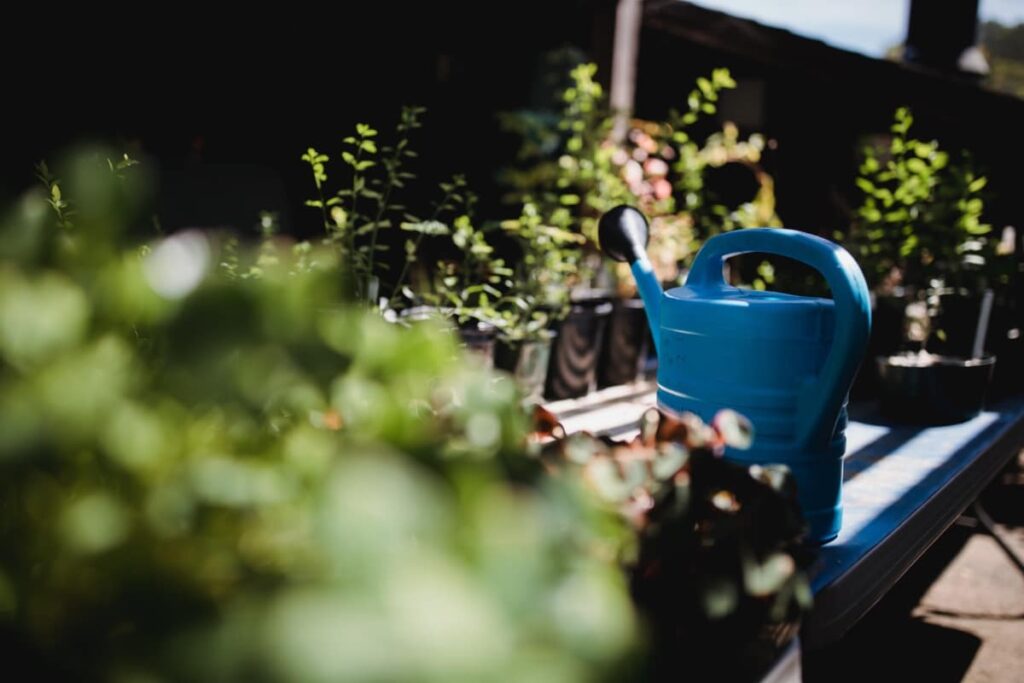
Watering your succulent garden is a crucial aspect of growing these plants. Succulents are known for their ability to store water in their leaves and stems, which allows them to survive in dry conditions. However, this doesn’t mean that they don’t require water at all. Overwatering can be just as harmful as underwatering, so it’s important to find the right balance.
To achieve this balance, there are several factors to consider. First, succulents prefer well-draining soil that can quickly drain excess water. If the soil is too dense or compact, it can lead to root rot, which can be fatal for your succulents. Therefore, it’s important to ensure that the soil is suitable for your succulent garden.
When it comes to watering, the frequency will depend on various factors, such as the climate, pot size, and succulent type. As a general rule, it’s better to underwater than overwater. Succulents can go for weeks without water, so it’s better to err on the side of caution.
To water your succulent garden, you can use a watering can or a spray bottle. However, it’s important to water the soil directly rather than the leaves, as this can lead to rot or fungal diseases. Water until the soil is moist but not soaking wet. If you’re unsure whether your succulents need water, you can check the soil with your finger. If it feels dry to the touch, it’s time to water.
It’s also important to note that succulents require less water during the winter months when they’re dormant. Therefore, you can reduce the frequency of watering to once a month or even less, depending on the conditions.
Watering your succulent garden requires finding the right balance between underwatering and overwatering. Use well-draining soil, water directly on the soil, and reduce the frequency of watering during the winter months. With these tips, you’ll be able to keep your succulent garden healthy and thriving.
Fertilizing Your Succulent Garden
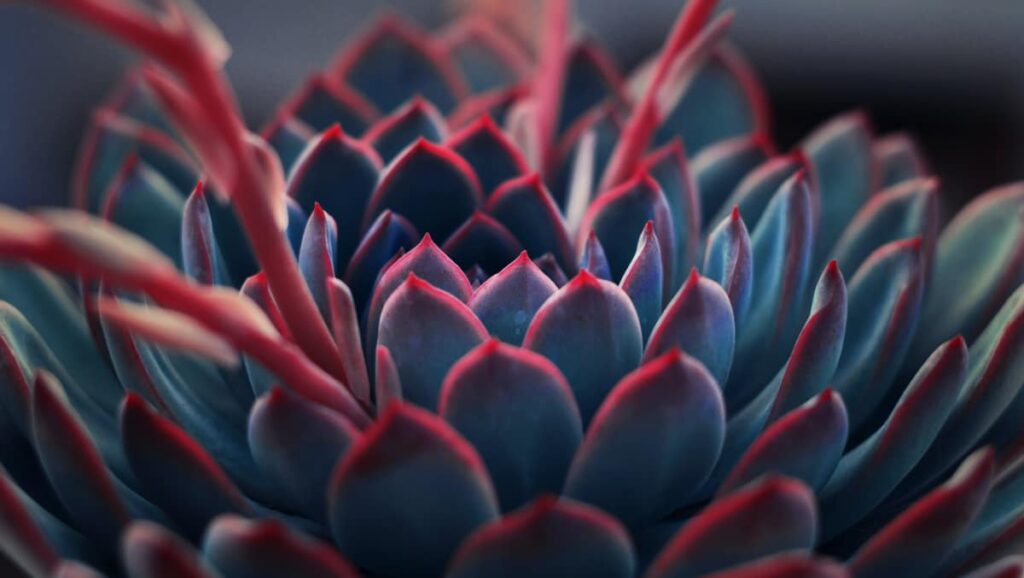
Succulents, those hardy plants that can survive in the harshest of soil conditions, still require nutrients to grow and thrive. Fertilizing your succulent garden is a crucial step in ensuring that your plants remain healthy and vibrant.
But, as with most things in life, less is more when it comes to fertilizing succulents. These plants have adapted to survive in nutrient-poor soil, so over-fertilizing can actually do more harm than good. It’s best to use a balanced, water-soluble fertilizer that is low in nitrogen. Nitrogen promotes leafy growth, which is not what you want for your succulents.
During the growing season, fertilize your succulent garden once a month. However, in the winter, when the plants are dormant, you can skip fertilizing altogether. But, be sure to follow the instructions on the fertilizer package and dilute it to half strength.
When applying fertilizer, it’s important to avoid getting it on the leaves or stems of your succulents. This can cause burns or damage to the plant. Instead, apply the fertilizer to the soil around the base of the plant.
If you prefer to use organic fertilizers, there are several options available. Compost, worm castings, and fish emulsion are all good choices for succulent gardens. These natural fertilizers provide slow-release nutrients that won’t harm your plants.
Remember, fertilizing is just one part of caring for your succulent garden. Proper watering, sunlight, and soil conditions are also important factors in keeping your plants healthy and thriving. With a little bit of attention and care, your succulent garden will be a beautiful and low-maintenance addition to your home or garden.
Maintaining Your Succulent Garden
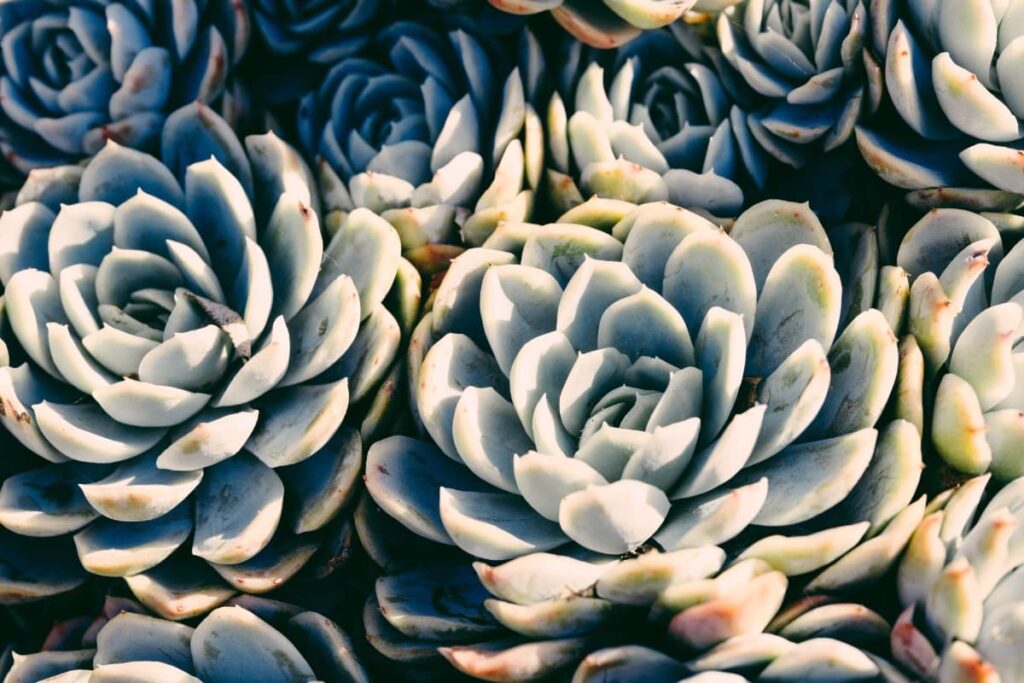
Once you have successfully planted your succulent garden, it is crucial to maintain it properly to ensure its longevity and health. However, overwatering can lead to root rot and other diseases. It is recommended to water your succulent garden once a week during the growing season and once every two to three weeks during the dormant season. Make sure the soil is completely dry before watering again. Remember, too much water can be detrimental to your succulent garden’s health!
Soil
Succulents require well-draining soil to prevent water from sitting in the roots. You can use a cactus or succulent soil mix or create your own by mixing sand, perlite, and potting soil. Avoid using heavy garden soil or compost. The right soil mix is essential for your succulent garden’s survival!
Fertilizing
Succulents do not require frequent fertilizing, but you can use a balanced fertilizer once a month during the growing season to promote growth and flowering. However, be careful not to over-fertilize, as this can harm your succulent garden. A little goes a long way!
Sunlight
Succulents require bright, indirect sunlight to thrive. Place your succulent garden in a location that receives at least six hours of sunlight per day. If your succulents are not getting enough sunlight, they may become leggy and stretched out. Remember, sunlight is the lifeblood of your succulent garden!
Pruning
Succulents do not require frequent pruning, but you can remove any dead or damaged leaves or stems to promote new growth. You can also pinch back the tips of the stems to encourage branching. Pruning is an essential part of maintaining your succulent garden’s health and beauty!
By following these tips, you can maintain a healthy and beautiful succulent garden that will thrive for years to come
Common Problems and Solutions for Succulent Gardening
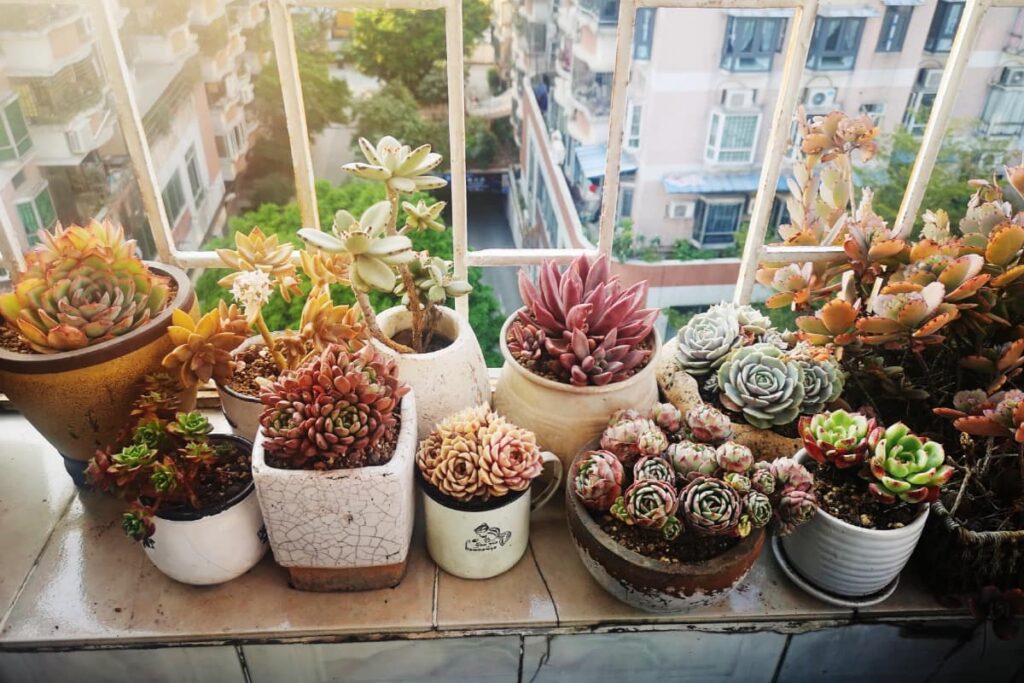
Succulent gardening is a fantastic way to incorporate some verdant hues into your abode or outdoor space. However, as with any other type of gardening, succulent gardening presents its own unique set of challenges. Here are some of the most common issues that arise in succulent gardening, along with their corresponding solutions:
Overwatering
By and large, the biggest issue people have with succulents is providing too much water. Succulents are well-equipped to survive in arid conditions, so overwatering can be a major issue. If you observe that your succulents are turning yellow or brown and their leaves are squishy, it’s a clear indication that you’re overwatering. The solution is to reduce the frequency of watering and ensure that the soil is well-draining.
Underwatering
Conversely, if you notice that your succulents are shriveling up and their leaves are parched and crispy, it’s a sign that you’re not watering them enough. Many people mistake their similarities with cactus plants and assume that succulents don’t need much water- if any at all. Unfortunately, this is wrong, and results in dry, shriveled plants. The solution is to water your succulents more frequently, but make sure that the soil is completely dry before watering again.
Poor Drainage
Succulents require soil that drains well to flourish. If the soil is too compacted or doesn’t drain properly, it can lead to root rot and other issues. The solution is to use a soil mix that drains well and ensure that the pot has drainage holes.
Pests
Succulents are generally resistant to pests, but they can still be affected by mealybugs, spider mites, and other insects. The solution is to regularly inspect your plants for signs of pests and treat them with an insecticidal soap or neem oil if necessary.
Sunburn
Succulents require ample sunlight to grow, but excessive direct sunlight can cause sunburn. If you observe that your succulents are turning brown or black, it’s a sign of sunburn. The solution is to relocate your plants to a shadier spot or provide some shade with a sheer curtain or shade cloth.
By addressing these common problems and implementing the corresponding solutions, you can ensure that your succulent garden thrives and adds aesthetic appeal to your home or garden.
Creative Ideas for Succulent Garden Design
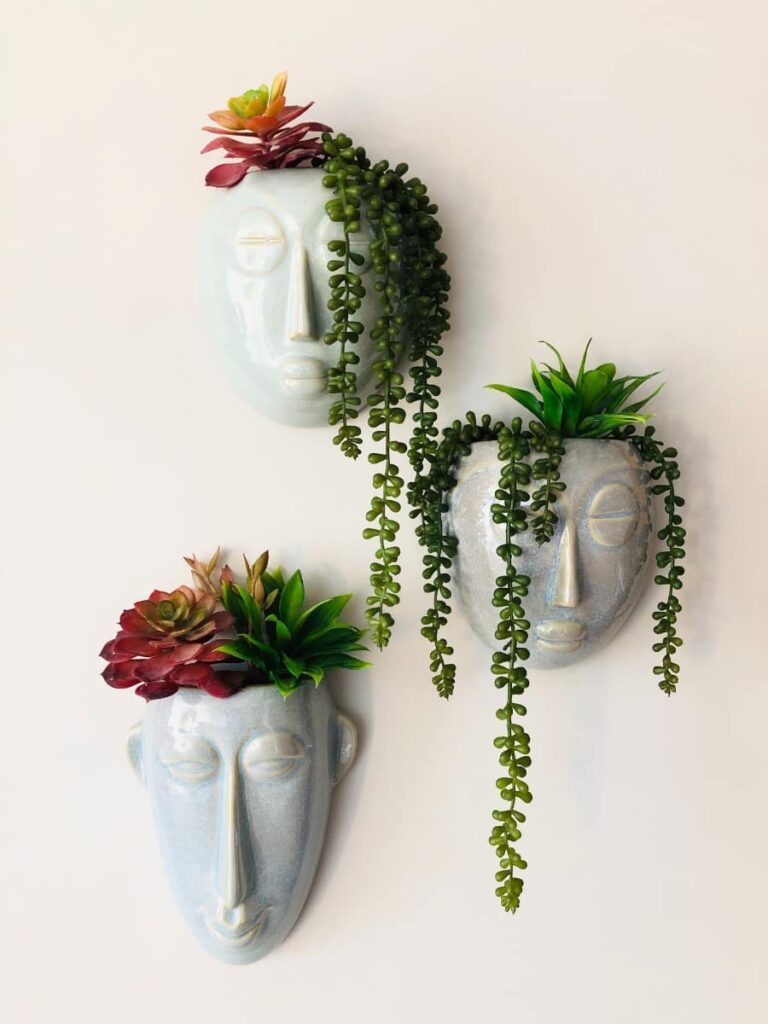
The possibilities for designing a succulent garden are truly endless. These versatile plants can be arranged in a variety of ways to create a visually stunning display that is sure to impress. Here are some creative ideas for succulent garden design that will leave you feeling inspired and excited to get started:
Vertical Garden
If you’re short on space or looking to add some greenery to a blank wall, consider creating a living wall by planting succulents in a vertical garden. This option is perfect for those who want to make a statement with their garden design.
Terrarium
Succulents are the perfect choice for a terrarium because they require minimal watering and can thrive in a closed environment. Use a glass container to create a miniature garden that can be displayed on a tabletop or shelf, adding a touch of whimsy to any room.
Rock Garden
Combine succulents with rocks and gravel to create a low-maintenance rock garden that adds texture and interest to any landscape. This option is ideal for those who want to create a unique and eye-catching garden design.
Container Garden
Plant succulents in a variety of containers, such as pots, baskets, or even teacups, to add a pop of color to a patio or balcony. This option is perfect for those who want to create a garden that is both beautiful and functional. Today, there’s also an abundance of novelty planters such as face planters that add a lot of personality to a space, and succulents are perfect plants to cultivate inside.
Fairy Garden
Incorporate succulents into a miniature landscape to create a whimsical fairy garden. Add miniature fairy houses, bridges, and other accessories to complete the look, creating a magical and enchanting space.
Edible Garden
Some succulents, such as aloe vera and prickly pear, are edible. Create an edible succulent garden by planting these varieties alongside herbs and vegetables, adding a unique and unexpected twist to your garden design.
Zen Garden
Create a peaceful and calming space by incorporating succulents into a zen garden. Use sand, rocks, and other natural elements to create a minimalist landscape that is both beautiful and serene.
No matter what design you choose, succulents are sure to add beauty and interest to any garden. With their unique shapes, colors, and textures, these plants are a versatile and low-maintenance option for any gardener looking to create a stunning and visually appealing garden design.
Conclusion and Final Tips for Succulent Gardening Success
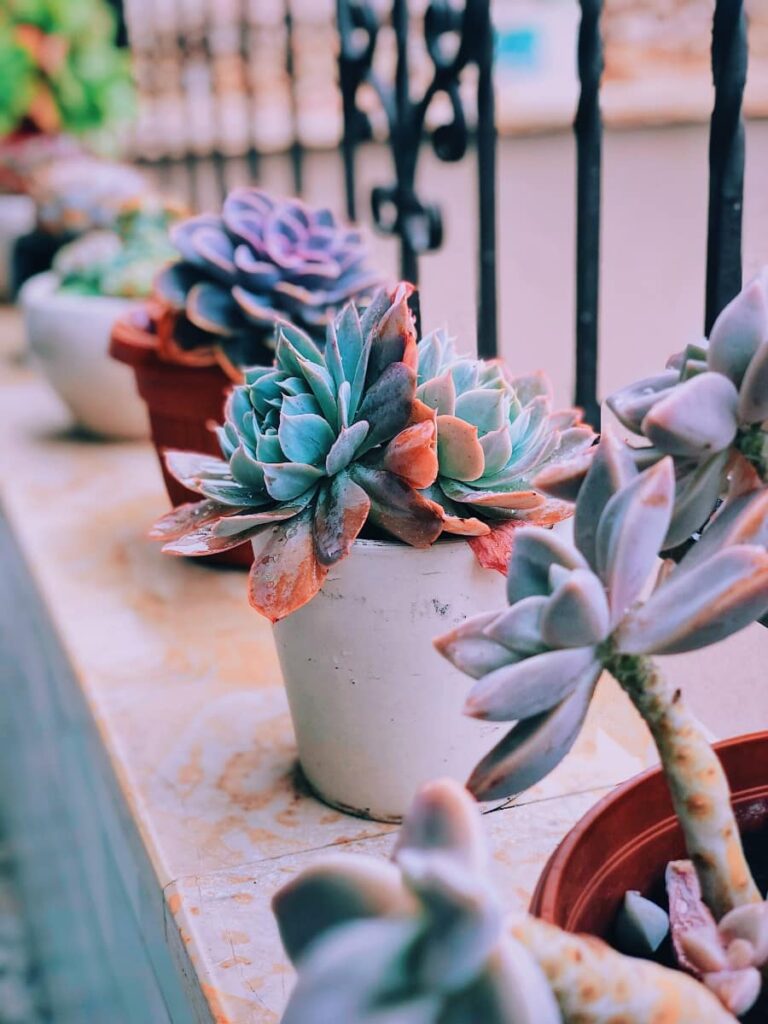
The art of growing a succulent garden can be a thrilling and fulfilling experience. With the right care and attention, your succulent garden can flourish and bring a touch of elegance to your home or outdoor space.
Here are some final tips for succulent gardening success that you should keep in mind:
Choose the right soil
Succulents require well-draining soil to prevent root rot. To create a well-draining environment for your plants, use a mix of sand, perlite, and potting soil.
Water sparingly
Succulents are drought-tolerant plants and do not require frequent watering. Only water when the soil is completely dry, and be sure to avoid getting water on the leaves or stem.
Provide adequate sunlight
Succulents need plenty of sunlight to thrive. Place your plants in a sunny location, but be sure to protect them from intense afternoon sun.
Keep an eye out for pests
Succulents are vulnerable to pests such as mealybugs and spider mites. Regularly check your plants for signs of infestation and treat them promptly if necessary.
Experiment with different varieties
There are countless varieties of succulents to choose from, each with its own unique shape, color, and texture. To create a diverse and captivating succulent garden, experiment with different varieties.
By following these tips and giving your succulent garden the care and attention it deserves, you can relish in a stunning and thriving garden for years to come. Happy gardening!
Frequently Asked Questions
What are succulents?
Succulents are plants that store water in their leaves, stems, and roots. They come in a variety of shapes, sizes, and colors and are known for their ability to thrive in dry conditions.
What kind of soil do succulents need?
Succulents need well-draining soil that allows water to flow through quickly. A good mix for succulents is one part potting soil, one part sand, and one part perlite or pumice.
How often should I water my succulent garden?
Succulents do not need to be watered as frequently as other plants. Water your succulent garden when the soil is completely dry, usually every 1-2 weeks depending on the climate and humidity levels.
Can succulents be grown indoors?
Yes, succulents can be grown indoors as long as they receive enough sunlight and are planted in well-draining soil. Place them near a sunny window or under a grow light.
How do I propagate succulents?
Succulents can be propagated by taking stem or leaf cuttings and allowing them to dry out for a few days before planting them in well-draining soil. Some succulents can also be propagated by division.
What pests and diseases should I watch out for in my succulent garden?
Succulents are generally resistant to pests and diseases, but they can still be affected by mealybugs, spider mites, and fungal infections. Keep an eye out for any signs of damage or discoloration and treat accordingly.

